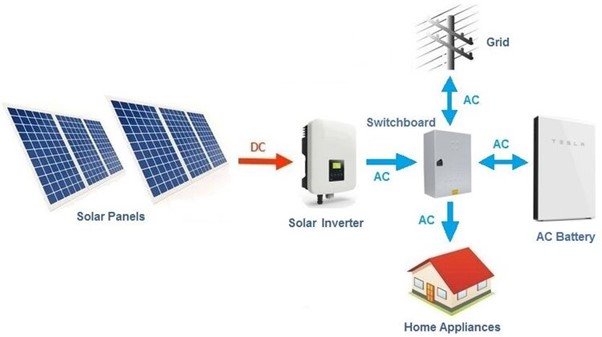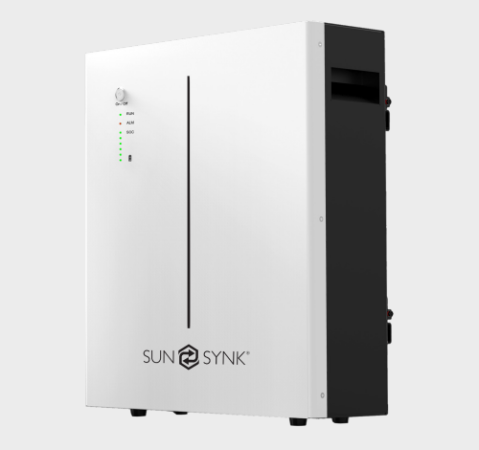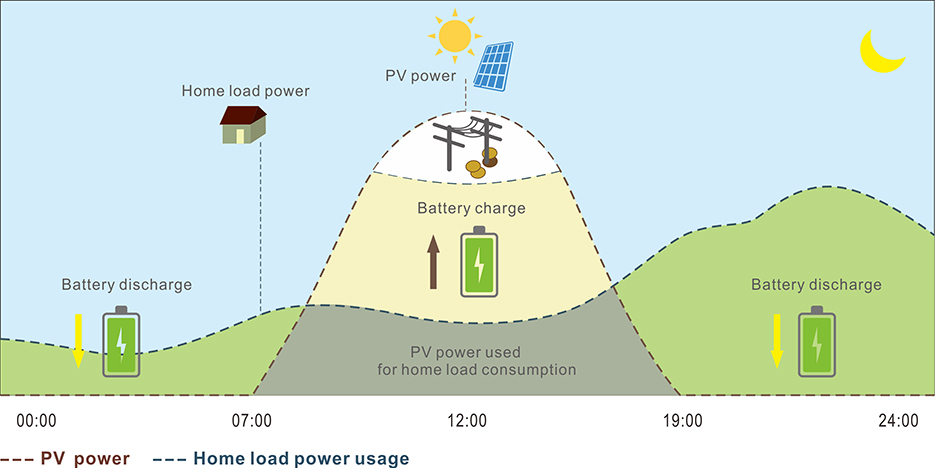Like any kind of battery, a solar battery simply stores energy. By storing your solar energy within a solar battery, you end up with a supply of green energy to use whenever your home needs it. This comes in extremely handy during the evening and night when your solar panel system isn’t able to generate as much power. The benefits of home battery storage speak for themselves, but which solar battery to choose becomes a pressing question.
The average home uses around 8kWh of electricity per day. The capacity of new lithium-ion batteries ranges from around 1.5kWh up to as much as 25kWh.
Ideally, you want a battery that will cover your evening and night-time electricity usage, ready to be charged up again when the sun comes up. You’ll also need to bear in mind how much your solar panels can generate, as there’s no point in buying a battery that’s bigger than it can fill.
With a well-chosen battery for your home’s energy use and your solar panels‘ output, you should find that you can have enough electricity to serve your evening needs for most of the year. You might find that you are still drawing on grid electricity for some of the longest winter nights.
You’ll need to speak to one of our Consultants to discuss what will be the right size for your home.
NB: Installing a battery does not affect Feed-in Tariffs payments at all

Similar to the battery technology found in your electric vehicles, tablets, and phones, many solar batteries are Lithium-ion based. Known for their low lifetime cost, and higher efficiency, lithium-ion batteries are seen as the batteries of the future. The most modern Lithium-ion technology used in solar batteries is Lithium ion phosphate (LiFePO4 or LFP). Compared to lead-acid batteries and other lithium batteries, LiFePO4 batteries have a longer life span. They also have improved discharge ,charge efficiency and are now extremely safe.
A battery’s life cycle indicates the lifespan of a solar battery. Similar to a phone or laptop battery, a solar battery can only be fully recharged and emptied a certain amount of times. Therefore, the larger amount of lifecycles a solar battery can perform, the better! As the average lifespan of Solar Panels is 15 years, ideally you would want an energy storage system that can match it. Our batteries have a lifespan of a minimum of 20 years !
Just like any household appliance, solar batteries also come with a warranty. The warranty of a solar battery is often an indicator of how long you can expect your home battery to last. Defined by the number of cycles the battery can complete. Usually, more expensive batteries include longer warranties(10 years), as the battery is more durable.
Despite popular belief, not all solar batteries are capable of supplying energy during a power cut. As your solar panels and battery connect directly to the main grid, your solar inverter will automatically switch off your system during a power cut. This is so that it is safe for the engineers to work on the grid. However, you can still gain power if your solar battery has an emergency backup storage functionality.
The Sunsynk Hybrid Parity Inverter is a highly efficient power management tool that allows the user to hit those ‘parity’ targets by managing power flow from multiple sources such as solar, main electrical grids, and generator, and then effectively storing and releasing electric power as the utilities require.
Dimensions (L x W x H) : 233 x 445 x 708 mm
Weight : 30 Kg
Communication with BMS : RS485; CAN

Depth of Discharge is the maximum percentage of a battery’s capacity that is useable without the need for a recharge. Although a battery will state a capacity, you will never be able to use that full amount. This is because draining a battery completely can damage the battery itself. The Depth of Discharge is there to help you understand how much of the battery’s total capacity can be safely used. For example, a 6.5kWh battery has a depth of discharge of 94.5%. This means that although its total capacity is 6.5kWh, only 6.14kWh can be used before recharging, otherwise, the battery can get damaged. Hence the usable capacity is 6kWh.
To conclude, the higher the Depth of Discharge, the more of your battery storage you can consume on a day-to-day basis. Most batteries are now discharging at 100%
Long life span with an expected life of 10-years 5-year product warranty(non extendable)
10-year performance warranty
Parallel capability of 16 units 100% Depth of Discharge 5.12kW maximum discharge power (C0.5 rated)
Batteries provide excellent thermal stability and storage and also has a self-monitoring function to detect abnormalities. IP rating 40
Dimensions (W x D x H) : 450×150×533mm
Weight : 47 Kg
Discharge Voltage : 45.6-56.16 Vdc
Nominal Capacity : 100Ah

A battery’s charge rate is the rate of time it takes to charge or discharge in Amps. The charge/discharge rate is calculated by dividing the capacity of the battery by the number of hours it takes to charge/discharge.
Most common UK and EU households will use low-voltage batteries with a discharge/charge rate of 3kW. High Voltage solar batteries, which are not common residentially, have a 5kW charge/discharge. A higher charge/discharge rate means that your solar battery is capable of handling higher base loads and surges.
Monitoring platforms make it possible for users to view and monitor their energy usage via an app on their phone or PC. By gaining access to this data, each customer is able to view how much energy is being stored in their battery. The user will also be able to see whether or not their battery is charging, and how much energy their solar PV system is generating.
To some users the ability to see how they are using their energy is invaluable, for less tech savy users this feature isn’t as important.
Some solar batteries such as GivEnergy allow for autonomous grid trading. Smart, automatic grid trading takes the control out of the user’s hand and puts it into the hand of artificial intelligence. Trained specifically to save you money. Batteries that allow for autonomous grid trading take advantage of tariffs such as Octopus Agile or Social Energy. The integrated AI automatically charges your battery from the grid when the cost per unit of energy is low. This not only improves the balance of renewable energy on the National grid network but also reduces your green energy waste. Allowing other connected users to power their homes on your clean energy.
To some users the ability to see how they are using their energy is invaluable, for less tech-savvy users this feature is not important
Retrofitting. AC-coupled batteries are easy to retrofit. They can be simply added to any home’s existing solar panel installation, and allow for gradual expansion.
Within an AC-coupled system, battery faults won’t have a direct impact on your Solar PV generation, and vice versa. Yet, because there are more inverters you gain more combined power.
AC systems can be more optimal, as you are not restricted by where you can put your inverters and batteries. While inverters are better installed in cooler temperatures, batteries are optimal at around 20°C.
Versatile Charging. An additional benefit of AC-coupled systems is that they allow for the batteries to charge from both the solar panels and the grid. This means if your solar panel system isn’t generating enough electricity, you can still rely on the grid for power.

The solar hybrid inverter will first use the solar energy for the house load first, the left solar power will be used to charge the battery. After the hybrid inverter’s battery is charged, the solar energy can be fed into the grid.
inverter will charge or discharge battery according to the time users set.
The solar energy collected by the hybrid inverter will be used to charge the battery first. then take family load and at last feed into grid. This mode of the hybrid inverter is suitable for areas with unstable power supply from the grid.
Kingfisher Court
Woodmansey
Beverley
East Yorkshire
HU17 0RT
Company Number – 12502284
VAT No: 383 2435 93
Registered in England & Wales

Registered in England & Wales